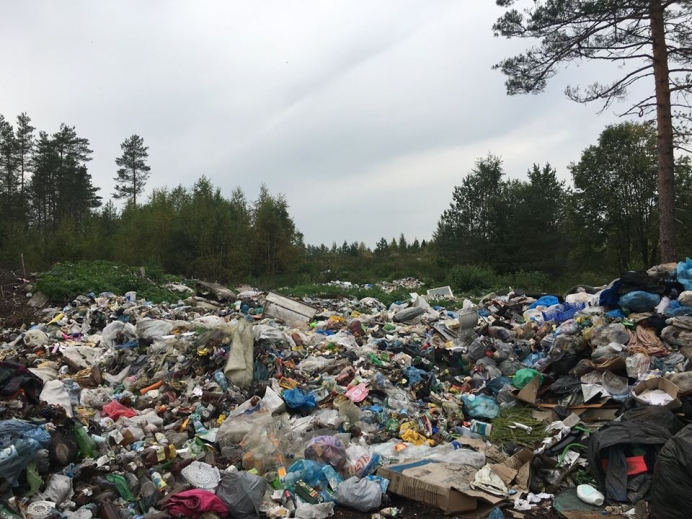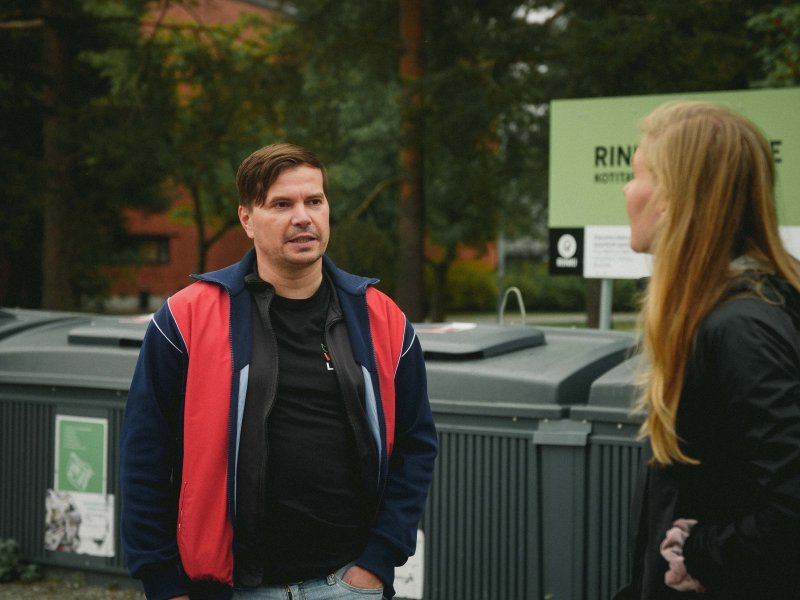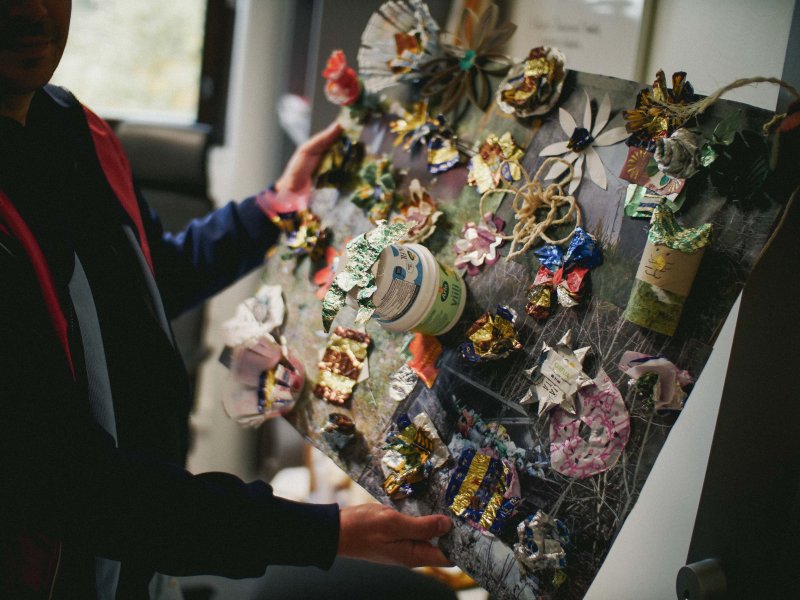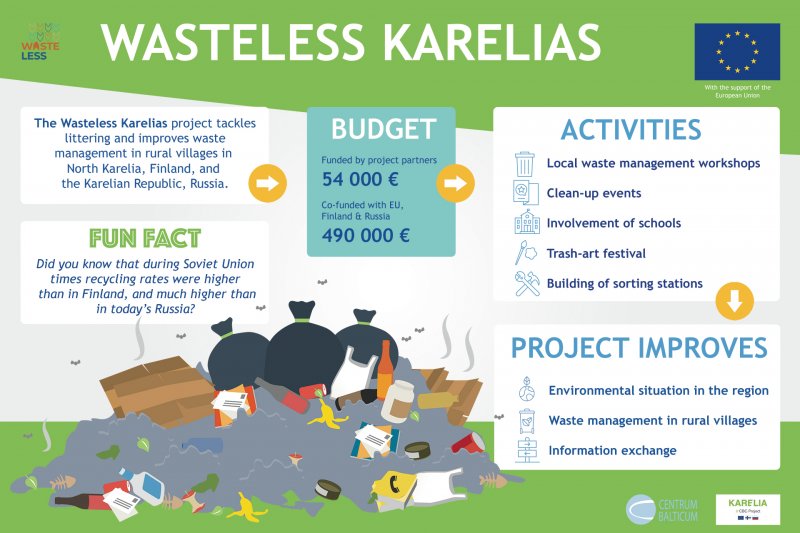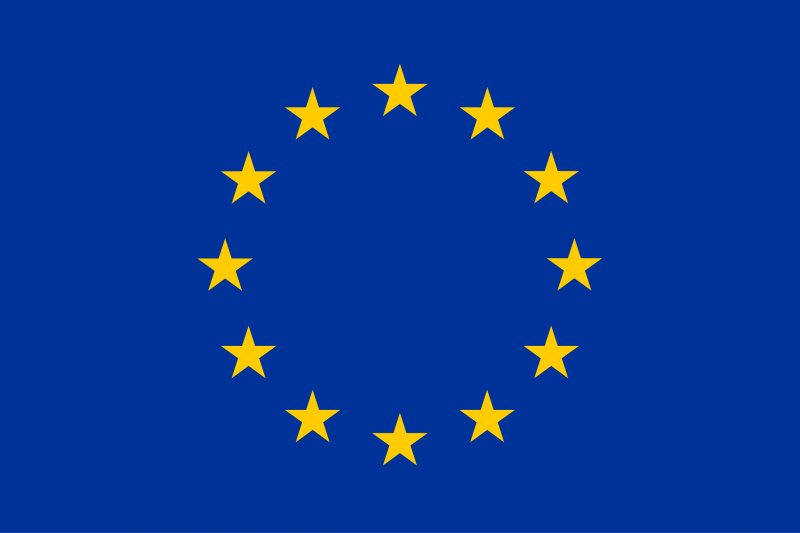“In the beginning, we only had an idea of a cross-border cooperation with a focus on rural areas. Then we started to have more information about the needs and situation of environmental problems in these villages. We also realized quite quickly that a project on waste management could be helpful,” the project coordinator Mortiz Albrecht recalls.
Work in rural villages on both sides of the border
Waste management have changed in Russia from local level to regional. The problem is that most villages do not have the resources, expertise or proper infrastructure for waste management. This is where the WasteLess Karelias project steps in, as it provides these elements that villages are now lacking of.
When choosing the target villages (Naistenjärvi, Tolvuja and Vedlozero) on Russian side, the project considered their size, location, and diversity. It was also important that the villages were all in different districts to cover larger area in the project. In addition, as the project works with institutions, it was necessary to ensure institutional capacity and commitment to the project activities.
In Finland, the situation is very different as waste management infrastructure is more developed, explains Taru Peltola from the Finnish Environment Institute (SYKE), one of the project partner organisations. On the Finnish side of the border, the project addresses, for example, long distances and how to make recycling more efficient.
In both countries, local residents are encouraged to be part of developing solutions to the problems.
Art as a method for training and raising awareness
One of the key activities in the project is awareness raising. Particularly in Russia, recycling is not well known and children do not learn it at home or schools in the same way as in Finland. Workshops and seminars about recycling and waste are organized in both countries.
Waste art has an important role in the project. It serves as an interactive method to involve young people and to show how waste can be reused. Using waste art for communications is also alternative and sparks interest in a different way than only using statistics and fact sheets.
People in target villages and schools are very active and eager to learn. In Russia, where the problem is bigger and there are less resources, project beneficiaries are happy to have outside help and support.
When planning the project, schools were a requirement in Russian target villages as the project organizes also clean up events. In these events, pupils gain information about waste, play sorting games and concretely pick up trash on the ground creating piles of up to 600kg. “The difference in the surrounding areas after a clean-up event is remarkable,” Moritz describes. The project has very positive experiences from working with schools. In Finland, the focus is less on schools as there are not schools anymore in the Finnish target villages.
In the project, evaluation of activities plays also an important role. As it aims at creating waste management solutions for the target villages, it is necessary to do questionnaires and to collect data to analyse the impact: how the perceptions have changed and what people have learnt.
Added value of cooperation
The project has benefited a lot from cross-border cooperation, Moritz tells. Working with two different countries, it is possible to see different systems and learn from each other. For example, in Russia, there is a big interest in Finnish waste management expertise, whereas Finland can take back home Russian waste art tradition which teaches to see waste as something that can be reused and turned into art. “Without cooperation there would be less new ideas and less spirit to fight problems that influence our everyday lives,” Taru says.
Waste and litter are problems in both countries, and projects are platforms to connect people and solve these together.
Contribution to the Baltic Sea Region
Even if the project target location is not by the coast, it is still situated in the Baltic Sea catchment area, and thus deals with the impact of waste on water. “If in the project, we manage to have less garbage discarded in nature, it is a matter of environmental protection in the long run.”
Ideally, the project could spread knowledge on how to create management systems on a small budget, and influence the waste management broader than just the project area.
WasteLess Karelias in a nutshell:
- Cross-border project between Finland and Russia funded by Karelia CBC
- Partners: the University of Eastern Finland (UEF), the Finnish Association for Rural Culture and Education (MSL), the Institute of Economics at the Russian Academy of Sciences in Petrozavodsk (IoE) and the Finnish Environment Institute (SYKE).
- Implementing period 2018-2021
- Addresses the problem of littering and insufficient waste management facilities in rural villages in North Karelia and the Karelian Republic
- Raises awareness about waste among local residents, mobilises local waste management skills and provides means to improve the cleanliness of village environments
The article is part of an European Union funded project "Cohesion through EUSBSR" promoting positive results of EU Cohesion policy in the Baltic Sea macro-region (EUSBSR).
The article reflects only the author's view and the European Commission is not responsible for any use that may be made of the information it contains.
With financial support from the European Union
 |
 |
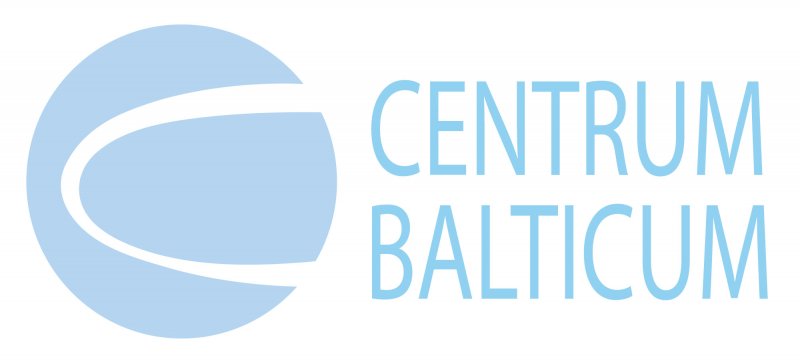 |




